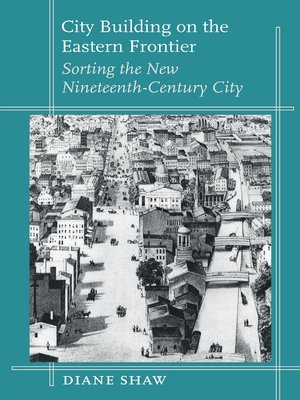City Building on the Eastern Frontier
ebook ∣ Sorting the New Nineteenth-Century City · Creating the North American Landscape
By Diane Shaw

Sign up to save your library
With an OverDrive account, you can save your favorite libraries for at-a-glance information about availability. Find out more about OverDrive accounts.
Find this title in Libby, the library reading app by OverDrive.



Search for a digital library with this title
Title found at these libraries:
| Library Name | Distance |
|---|---|
| Loading... |
America's westward expansion involved more than pushing the frontier across the Mississippi toward the Pacific; it also consisted of urbanizing undeveloped regions of the colonial states. In 1810, New York's future governor DeWitt Clinton marveled that the "rage for erecting villages is a perfect mania." The development of Rochester and Syracuse illuminates the national experience of internal economic and cultural colonization during the first half of the nineteenth century. Architectural historian Diane Shaw examines the ways in which these new cities were shaped by a variety of constituents—founders, merchants, politicians, and settlers—as opportunities to extend the commercial and social benefits of the market economy and a merchant culture to America's interior. At the same time, she analyzes how these priorities resulted in a new approach to urban planning.
According to Shaw, city founders and residents deliberately arranged urban space into three segmented districts—commercial, industrial, and civic—to promote a self-fulfilling vision of a profitable and urbane city. Shaw uncovers a distinctly new model of urbanization that challenges previous paradigms of the physical and social construction of nineteenth-century cities. Within two generations, the new cities of Rochester and Syracuse were sorted at multiple scales, including not only the functional definition of districts, but also the refinement of building types and styles, the stratification of building interiors by floor, and even the coding of public space by class, gender, and race. Shaw's groundbreaking model of early nineteenth-century urban design and spatial culture is a major contribution to the interdisciplinary study of the American city.







